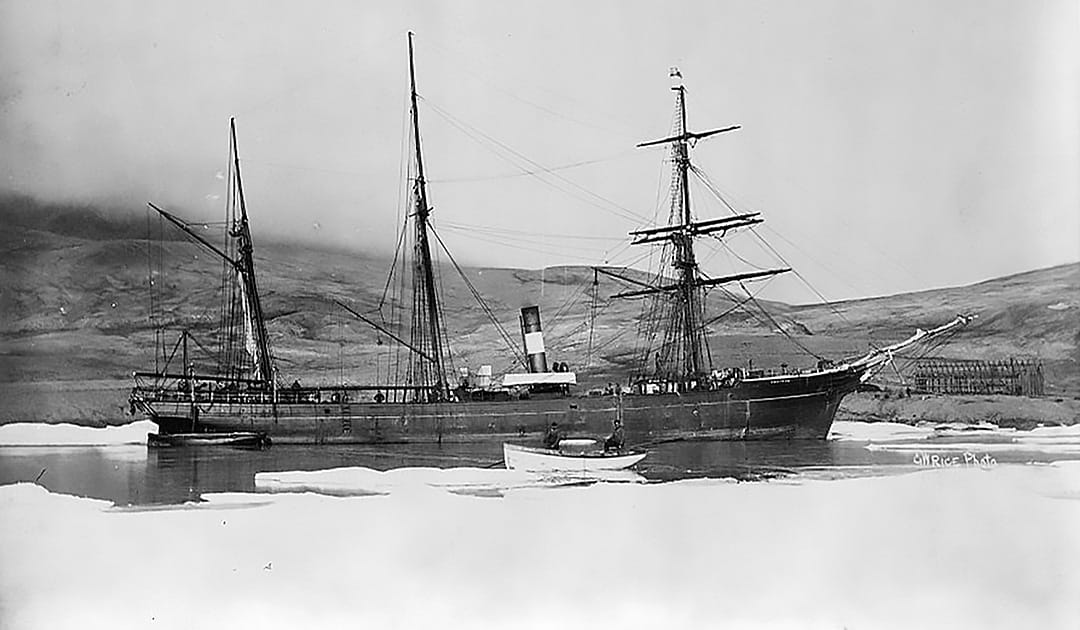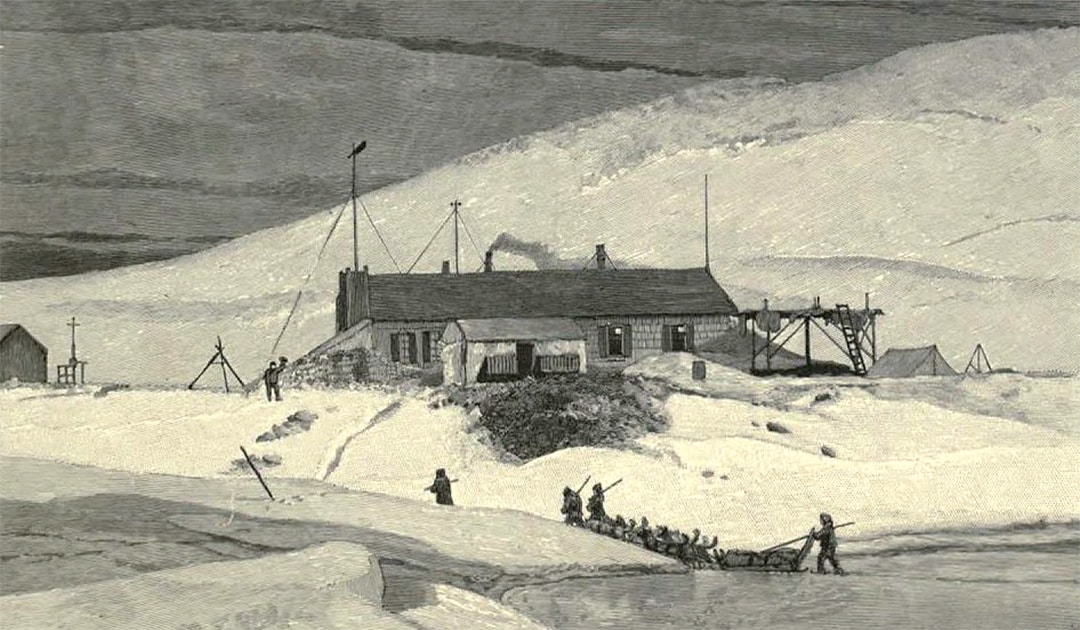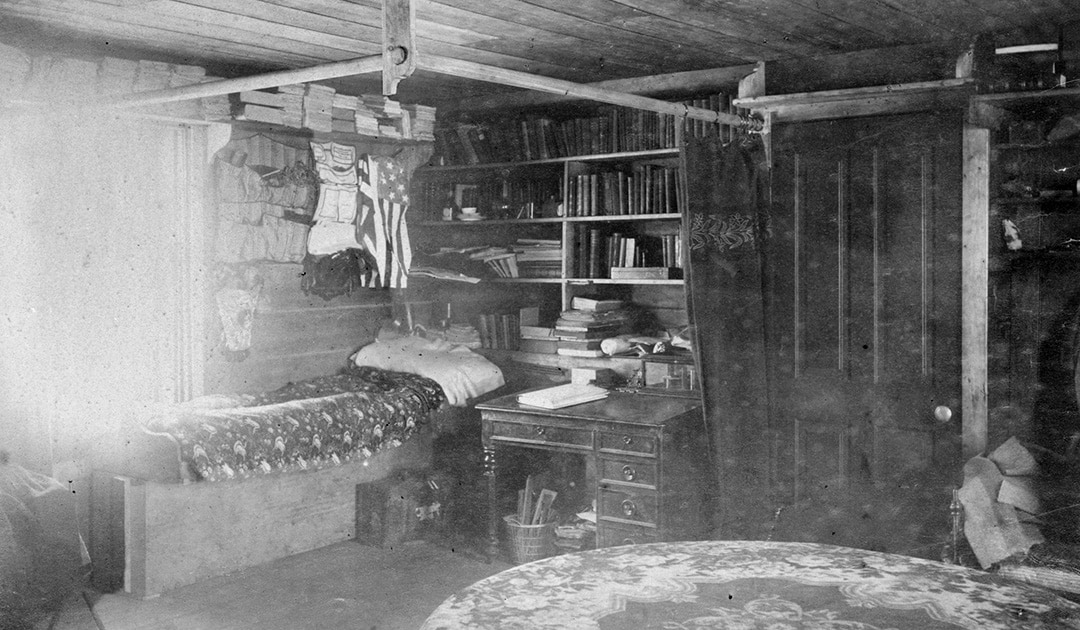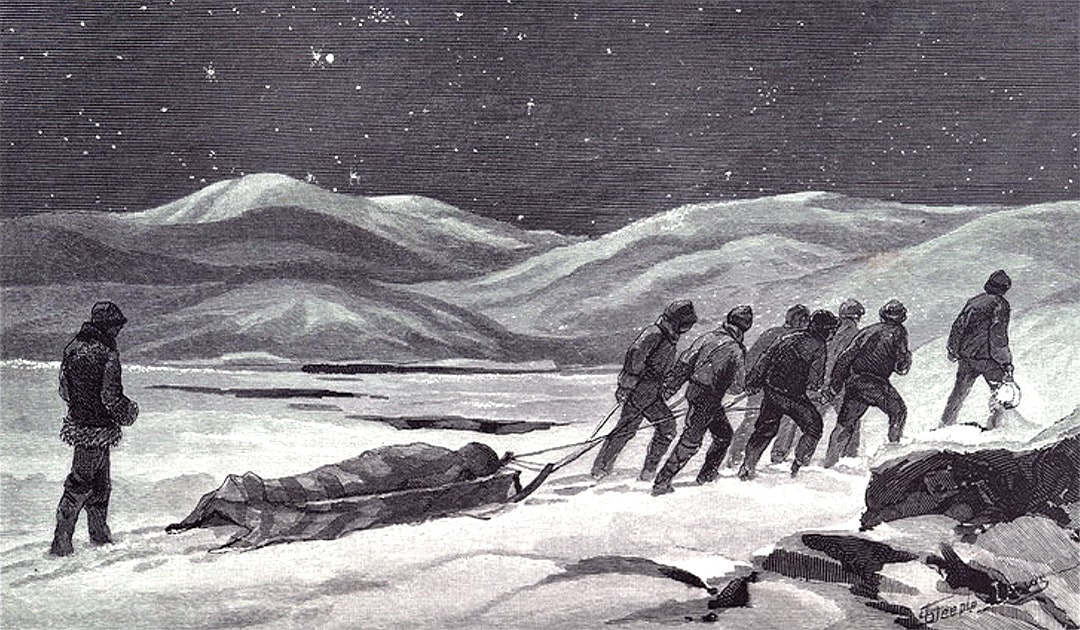
He had no experience with the Arctic. But he knew how to wage war. Born in Massachusetts in 1844, Adolphus Washington Greely volunteered for the army at the age of 17 and was severely wounded three times during the American Civil War. The cavalry lieutenant was considered extremely disciplined, tactically adept and – absolutely humorless.

In 1879, the American government placed him in command of the project to establish the world’s northernmost research station in Lady Franklin Bay on Ellesmere Island in Nares Strait and to operate it for one year as part of the first International Polar Year. It was the first time that a polar expedition was financed from the state treasury, more precisely from that of the War Department. And the enterprise was regarded obviously as child’s play: the ship was a sealing ship reinforced at the bow and keel, the crew of 23 consisted largely of trainee officers, there were no scientists on board and no Inuit who knew their way around ice and cold.

After a smooth crossing, the “Proteus” dropped the crew off at said point on August 11, 1881. Adolphus Greely refused to make contact with the Inuit living there: Like the Indians, the natives of the Canadian Arctic were considered third-class citizens. Instead, he gave the research station the military name Fort Conger.
Here, the crew members now went about their daily tasks, but the mood in the camp was more than lousy: the military drill led to constant tension in the team. One officer quit. Greely stripped the doctor of his military rank. The year went by anyway.

But the ship that should have picked up the crew as planned in August 1882 did not make it through the Kane Basin: In contrast to the previous year, this narrow sea passage between Canada and Greenland was now heavily iced over. The ship sailed back empty-handed, leaving Greely and his men to hibernate a second time without information.
The following July 1883, the “Proteus” attempted to rescue the crew, but was wrecked off Kane Basin and sank a short time later. Various attempts by whaling ships also failed.

Finally, on August 8, 1883, Greely left the camp on his own initiative: in three boats he and his men rowed south through Kane Basin to Cape Sabine as noted in the retreat order. But not along the green west coast, where there would have been many animals to hunt, but along the heavily icy, practically animal-free east coast: That was, after all, the order to retreat. When they finally arrived at Cape Sabine after 51 days, they were exhausted and half starved. Only 50 kilometres from the new camp would have been an Inuit settlement with resources. But Greely ignored that: he still wanted nothing to do with Inuit. And he had orders to wait at Cape Sabine.

Which he did. For 250 days. The men were so weakened by hunger and cold that they could hardly go hunting. They fed on moss and lichen – and starved and froze to death one by one. Nevertheless, Greely kept up the military drill: he had a crew member shot as a matter of rank for stealing seal pelts from the camp. The doctor committed suicide. At least four bodies were eaten by those still alive.

Robert Peary later called Greely’s expedition a “black mark on the history of American polar exploration”: it was a disastrous result of military zombie obedience, human ignorance, and racist arrogance. Adolphus Greely as one of the five survivors, was nevertheless hailed as a hero in America.
After all, after the great 1906 earthquake in San Francisco, he played a prominent role in organizing the rescue efforts. Greely died in Washington on October 20, 1935.





